Three Great Ways to Create Online Exit Ticket Activities

This morning I received a question from a reader of my Practical Ed Tech Newsletter. She wanted to know what I would suggest as an alternative to Google Forms and Google Classroom for conducting exit ticket activities in her biology class. I quickly replied with three options that I really like. The first option that […]
We’ve Got Worms! And More Questions from My Daughters

Earlier this week we had some relatively warm days and were able to do a little spring yard work. My daughters like to try to help with some of it. But like most four and five year old kids, they quickly get distracted. Such was the case when they discovered some worms under some leaves […]
A Platypus in My House! Fun and Learning Through Augmented Reality

My four-year-old loves Gus the Platypus in the Pete the Cat series. A couple of weeks ago that led to her asking questions like “can we get a platypus?” and “what’s a platypus sound like?” My answers were “no” and “I don’t know.” I did, however, put an augmented reality platypus in our house. Through […]
How Seashells Are Made – A Lesson for Beachcombers

If your summer plans, like ours, include going to the ocean, you may be interested in this video from Reactions about how seashells are made. In How Seashells Are Made viewers learn that seashells are made of 95% calcium carbonate and 5% protein and sugar. The video doesn’t stop with just listing the components of seashells. […]
Daddy, What Are Hiccups?

My youngest daughter had hiccups twice this week. On Friday morning she asked, “what are hiccups?” Fortunately, I knew the answer. Unfortunately, I didn’t have a great way of explaining involuntary muscle contractions to a three-year-old. I did my best and told her that it’s part of her body’s way of growing and getting stronger […]
Add Interactive Annotations to Images With a New Classtools Tool

Russel Tarr at Classtools has come up with another great little tool for teachers and students. The new Image Hotspot Generator on Classtools makes it easy to add interactive annotations to any picture that you upload to the site. The annotations that you add to your pictures can include text and links. Your annotated images […]
Build a Body – An Interactive Biology Lesson

Spend a few minutes using Build a Body and it is easy to understand why it was recognized by the National Science Foundation. In Sponge Lab Biology’s Build a Body students construct a human body system-by-system. To build a body students drag and drop into place the organs and bones of a human body. Each […]
PhET PowerPoint Add-in – Add Science & Math Simulations to Slides

PhET is a free resource that has been popular with science and math teachers for many years. PhET provides free interactive math and science simulations covering topics in physics, chemistry, biology, earth science, and mathematics. In the PhET library you’ll find simulations appropriate for elementary, middle, high school, and university students. PhET even offers a […]
How Birds Learn to Sing

Spring isn’t too far away and soon we’ll start to see and hear the songs of more birds around my home here in Maine. If you also live in a cold, northern climate the sounds of the birds is a welcome sign of spring. Why do birds sing? And how do they learn the songs […]
How Your Digestive System Works – A TED-Ed Lesson
How Your Digestive System Works is a new TED-Ed lesson. Like all TED-Ed lessons the graphics in the video are great. The content itself is rather basic and best suited for a middle school science classroom. If you want to extend the lesson I would recommend taking a look at Sponge Lab Biology’s Interactive Build […]
How the Human Body Processes Medicine

As some of you may have seen on Instagram, I injured my right hand on Friday evening. After looking at the cuts on my hand, the emergency room doctor prescribed a round of antibiotics and a mild pain reliever. So it was with some extra interest that I watched a new TED-Ed lesson titled How […]
More Than 400 Science Animations

Learners TV, like many similar sites on the Internet, offers an index of math and science video lessons. What makes Learners TV a little different is that it also has an index of more than 400 science concept animations. The science animations on Learners TV are organized into three categories; biology, physics, and chemistry. Please not that […]
How Trees Survive The Winter
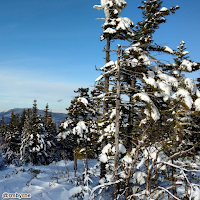
It was a crisp -10F at my house this morning. When it’s that cold everything seems crisp, brittle, and well…frozen. It makes you wonder how anything survives for long outside. I know that I’m always amazed when my lilac and blueberry bushes bounce back to life every spring. How do they do that? The answer […]
Snot, Poop, Puke, and the Lessons They Teach

This post was inspired by my daughter whose snot, poop, and puke have been on me at various points in the last few days. Who Pooped? is one of the most Pinned resources of all time on this blog. Who Pooped? is an interactive site in which students learn about various animals by guessing which animal created […]
What Are Owl Pellets? – Learn by Watching and Doing
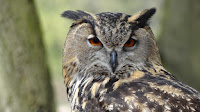
One of the cool things about living where I do, essentially the middle of nowhere by most standards, is getting to see lots of cool wildlife on a regular basis. That includes occasionally seeing owls when I’m walking my dogs at dawn and dusk. With owls come owl pellets that are fun to pick up […]
How Sea Turtles Find Their Way Home

A few years ago I had the privilege to witness sea turtles nesting in Costa Rica. Since then I have been fascinated by how they are able to find their way back to their birthplaces years later. So when It’s Okay To Be Smart published a video about sea turtles, I stopped what I was […]
Three Lessons About the Sound of the Human Voice

“I hate the way my voice sounds,” is often said by students and teachers the first time they hear their own voices on a podcast or video. This is because most people aren’t accustomed to hearing their own voices the way that others hear it. Why does your voice sound different to you when you […]
A New TED-Ed Lesson Explains Why There Are So Many Types of Apples

It is apple picking season here in New England. Take a stroll through a local orchard and you’re likely to see a bunch of different types of apples. In fact, you might even find a type of apple that you haven’t previously seen. The reason for this is explained in a new TED-Ed lesson titled […]
The Sights, Sounds, and Science of Autumn
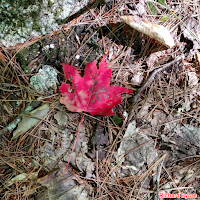
This morning I woke up to a chill in the air. As I walked my dogs I spotted a bunch of fallen, red leaves. In just over a week from now the autumnal equinox will be here in the northern hemisphere. Here are some resources for teaching and learning about the sights and sounds of […]
21 TED-Ed Lessons About Animals

Writing yesterday’s post about how animals see in the dark inspired me to look through the TED-Ed catalog for more interesting lessons about animals. As I browsed through the catalog I found lessons about how dogs “see” with their noses, why blue whales are so big, how ant colonies work, and eighteen other interesting lessons […]
How Do Animals See In the Dark?

How Do Animals See In the Dark? is a TED-Ed lesson that can help your students understand why their pet cats and other animals are more active at night than during the day. In the video students learn how the eyes of various animals have adapted to provide them with night vision that is far […]
The Threat of Invasive Species
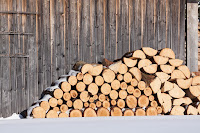
When you drive into my home state of Maine two of the first signs you’ll notice are a sign to watch for moose and a sign banning the importation of firewood. The reason for the moose crossing sign is fairly self-explanatory. The reason for the ban on importing firewood may not be so obvious. Importing […]
A Lesson on Bears and Punnett Squares
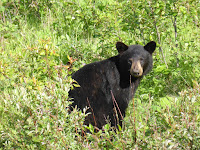
A recent conversation with a friend about black bears in our neighborhood (neighborhood is a relative term as I live on a six acre woodlot) reminded me about a neat National Geographic article that I read about five years ago. Back then National Geographic magazine had a cover story about the “Spirit Bears” of British Columbia. […]
Animal Migrations in Yellowstone National Park
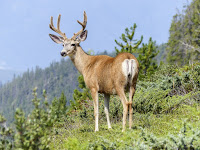
National Geographic recently published a great video containing remarkable footage of elk, pronghorn antelope, and mule deer migrations in Yellowstone National Park. The short video describes the length and direction of the migrations made by these beautiful animals. Make sure you turn up the volume to hear the sounds of the elk, mule deer, and […]
An Interactive Build a Body Lesson

A few years ago Sponge Lab Biology won a National Science Foundation award for its interactive Build a Body activity. Spend a few minutes using Build a Body and it is easy to understand why it was recognized by the NSF. In Sponge Lab Biology’s Build a Body students construct a human body system-by-system. To build a body students drag and […]
What Would Happen if You Didn’t Drink Water? – And 12 Other TED-Ed Lessons About the Human Body

What Would Happen if You Didn’t Drink Water? is the title of latest TED-Ed lesson. The lesson addresses items like how much water should a person drink, how much water a body loses during an average day, and the effects of dehydration. The lesson also addresses what can happen when you consume too much water. […]
12 Lessons on How the Human Body Works
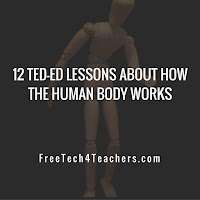
Last winter I started a playlist of TED-Ed video lessons about how the human body works. I started the playlist because I wanted a list that was a bit more refined than what I was finding on the TED-Ed website. The playlist started with five videos and with today’s addition of the lesson on carbohydrates […]
What Are Carbohydrates and How Do They Impact Your Health? – TED-Ed Lesson
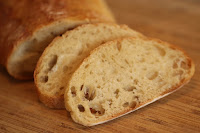
How Do Carbohydrates Impact Your Health? is the focus of the latest TED-Ed lesson added to my playlist of TED-Ed Lessons about the human body. How Do Carbohydrates Impact Your Health? explains what carbohydrates are, common food sources of carbohydrates, and how are bodies use carbohydrates. The lesson also explains what can happen to our […]

